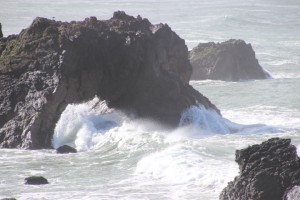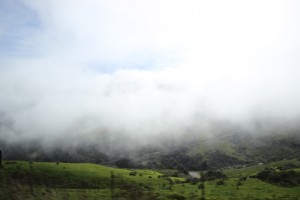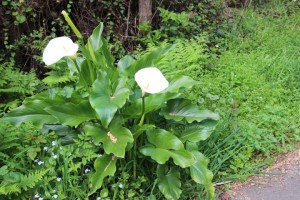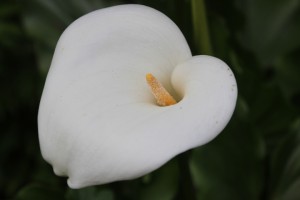Saturday 19th March
We left Valley Ford as the sun was burning off the early morning mist over the marshy lowlands and undulating meadows of this farming region. We shortly passed through the fishing harbour of Bodega Bay which is protected by the massive bulk of Bodega Head.
The bay was discovered for Europeans by Sebastian Vizcaino in 1603, but some historians belief that this honour should go to Sir Francis Drake because, to the south on Point Reyes lies Drake’s Bay named after the location he chose to get his ship repaired. Whoever first sighted Bodega Bay would have been met by indigenous peoples called the Olamentko. Later visits were made by the Spanish and in the 19th century by Russians who arrived here from Alaska and saw this part of California as a rich supply of food. Today it is a fishing community and occasionally a location for films.
Further north, as along the whole of this route so far, there were amazing views of rocky headlands, rocky stacks, arches and blow holes battered by powerful Pacific waves.
We also crossed many deep ravine like inlets of the ocean which as further south are a product of earth movements and invasion by the sea. Each one of these inlets was signposted as a tsunami hazard area and it was clear to see that fast moving giant waves would be funnelled by the narrowing inlets which would deepen the wave. These would be dangerous places to be. In between these inlets we were essentially driving along the top of the cliffs, sometimes in cloud as the cold air from the ocean crossed the land but to get to the ravine floor we dropped steeply many hundreds of feet and with lots of hairpin bends to cross the river in the bottom and then a steep climb and more bends to regain the cliff top. This makes for an interesting but slow drive.
We passed through Manchester on the way north. Population – not very many!
Later we called in at the Russian Gulch State Park which has pine forests and redwoods on top of high cliffs and deep valleys one of which is crossed by Highway 1 by a photogenic 1930s concrete bridge. Russian Gulch was the port for exporting timber from the forests but with the building of railways along the coast which penetrated the forests inland the timber trade moved to the railways for trading the products of the forest.
We established ourselves in Fort Bragg which was named in the mid 19th century as a military port to police a 25,000 acre Indian reservation. With the building of the coastal railway the town became a rail hub and port moving timber, passengers and supplies to and from the region and San Francisco. From our hotel room we have a great view of a wooden trestle bridge that was originally used by trains moving products around the region.
We have a new toy on the car which is a camera to assist with reversing!


















